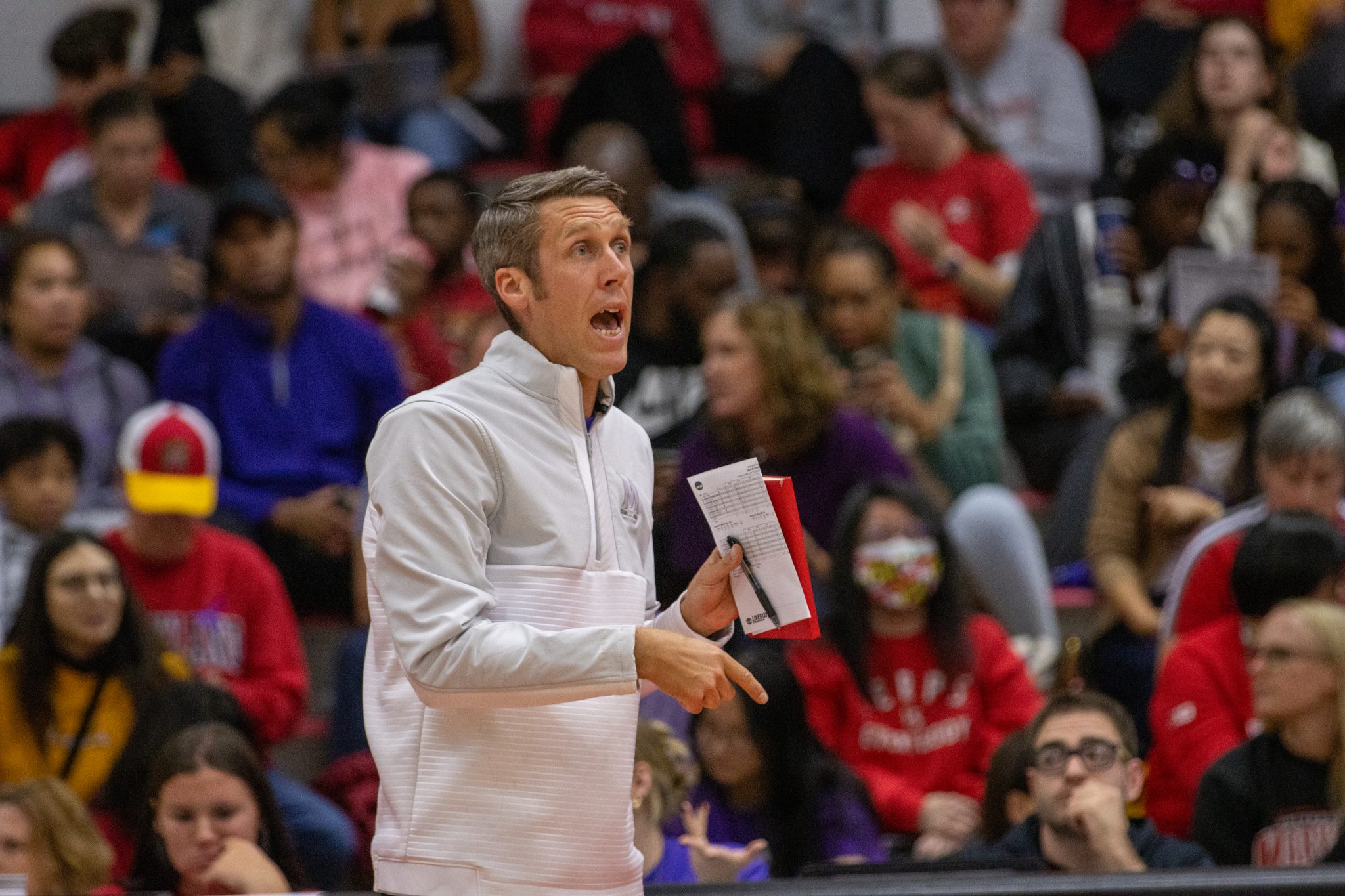Maryland volleyball had the recipe for beating Michigan State — it already did so in a four-set victory earlier in the season and looked to perform similarly strong on Saturday.
But the Spartans controlled most of the rallies in the rematch, cruising to a three-set blowout win.
The Terps did a decent job extending points, recording only six fewer digs than Michigan State, the sixth-best team in the Big Ten in that category. But hitters frequently lobbed weak free balls to the other side off those saves, leading to Spartan blockers easily anticipating and rejecting shots.
“I thought last time we were in control of possessions a lot better … we were putting more pressure on them,” coach Adam Hughes said. “Today, it felt like we were playing from behind in a lot of ways, there was a lot of scramble plays that we weren’t getting quality swings on.”
The lack of offensive firepower was costly in multiple ways.
[Maryland volleyball falls to Michigan State, 3-0, for second straight road sweep]
Michigan State had five more blocks than Maryland, with many coming at crucial spots as sets nearly tightened, after the Terps out-blocked the Spartans in their first meeting. It was a team-wide effort for Michigan State as four players notched at least three stuffs.
The Terps were still set up poorly even when shots made it around defenders. The Spartans’ back row easily retrieved attacks, allowing setters plenty of time to pass to spikers in prime spots to end points. Michigan State had 12 more kills than Maryland, a major difference from the earlier matchup in College Park when it had nine fewer.
“Their setter was — we call it in the box — right in the middle of the court, where she has time to set up,” Hughes said. “That’s where your hit rates are going to be really high at setter, so you’re going to connect really well.”
While Michigan State had three players who hit at least .200 with double-digit kills, the Terps had none.
[Maryland volleyball falls in straight sets to Michigan in Ann Arbor]
Maryland struggled to find any consistency with its strikes, hitting just .158 compared to Michigan State’s .320. The Terps finished with 33 kills, 18 less than in the first matchup. Their difficulties hitting around defenders helped the Spartans control points and mitigate the Terps’ solid serving.
Maryland, the conference leader in aces, tied Michigan State in that stat with six. While it rarely ended points directly on serves, it did hit them around the court to force the Spartans out of system — an advantage that evaporated as points dragged on.
“We weren’t able to generate enough offense, then obviously you get a lot of good opportunities coming back at you,” Hughes said. “Last time we played them we were … able to find ways to get kills in transition and long rallies. We knew that was going to be the focus going into this and we were not able to do that.”
It was a disappointing road trip for the Terps featuring back-to-back blowout losses. They’ll look to control points better in their last two matches to avoid their worst Big Ten record since 2016.



